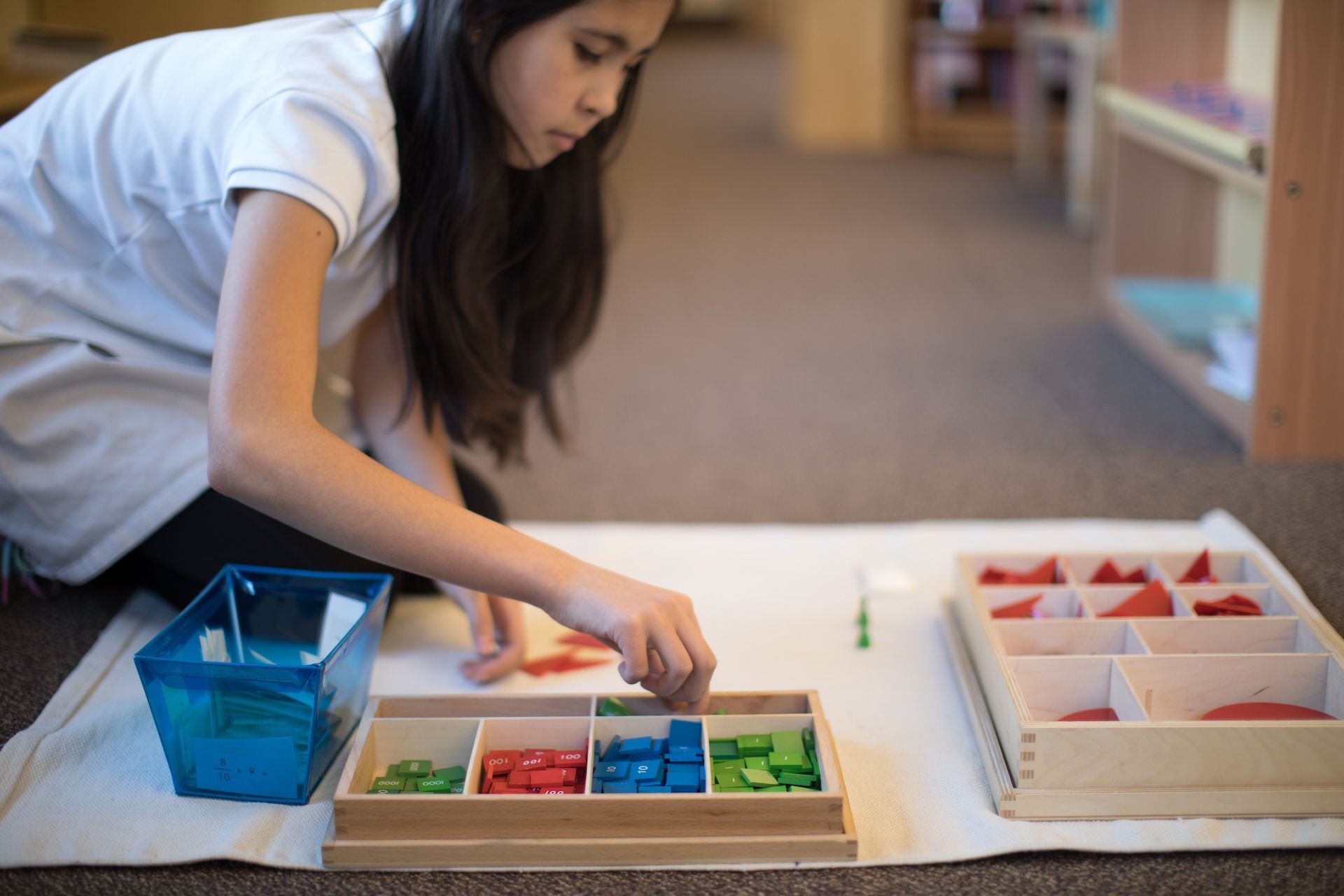


As children approach their elementary years, they can truly access the power of their imagination. As a result, they begin to ask big questions and want to explore through space and time. One way to support this big thinking is to provide resources they can explore. We love to find books that children lose themselves in, and that support deep learning.
We’ve found the following books particularly engaging, especially as children begin to grasp the vastness of time, the interdependency of all living things, and how human life is a continuation of much that has come before. For those children who have spent time working with the Timeline of Life, these books will reinforce concepts while offering new doors to open!
Continental Drift: The Evolution of our World from the Origins of Life to the Far Future
By Martin Ubce
The dance of the continents throughout the earth’s history provides a structural overview of this incredible resource. The mix of types of illustrations, including images from the Natural History Museum in London, support the engaging text. This is a very large book, and rightly so! While Continental Drift can be a resource for students’ research, it is also just a delight to read due to the author’s ability to make complex topics quite accessible.`
By Douglas Palmer, Illustrated by Peter Barrett
Although the beginning of the book has a great deal of helpful introductory and background information, children will most appreciate the one hundred illustrated site reconstructions based on fossil data. These two-page spreads provide a visual of what life may have looked like from a strelley pool 3460 million years ago in what is now considered Western Australia to a late Carboniferous ice age 299 million years ago in what is now Karoo Basin in South Africa to the big-game hunters of Folsom, New Mexico 10,500 years ago. With a color-coded timeline across the top of each of the 100 illustrations and specifics about each scene detailed below, children pour through this resource, making it well worth its hefty weight!
Forgotten Beasts: Amazing Creatures that Once Roamed the Earth
By Matt Sewell
With 45 lushly illustrated forgotten creatures and accessible paragraphs about each, this is a wonderful resource for children wanting to start prehistoric life research or just peruse particular pages. Each life form listed also has a key for their size, weight, diet, and the period they lived. Sewell’s stated intention is to bring these often lesser-known beasts of our past into more bright and colorful detail as paleontologists theorize they were probably not “muddy brown or boring green” and he does so quite well!
In the Past: From Trilobites to Dinosaurs to Mammoths in More Than 500 Million Years
By David Elliott, Illustrated by Matthew Trueman
A collection of short poems about creatures from the Cambrian Period (544-505 million years ago) to the Quaternary Period (1.8 million years ago to the present), this sweet book can inspire young people to think about prehistoric life from a new perspective. With just the right touch of humor and science, the poems provide illuminating information and fresh perspective, while the illustrations fill the page and expand the reader’s senses. Plus, the notes at the end of the book provide a launching point for children who want to learn more!
Life: The First Four Billion Years: The Story of Life from the Big Bang to the Evolution of Humans
By Martin Jenkins, Illustrated by Graham Baker-Smith
This incredibly large book is full of information and is the perfect resource for young people who have big questions about life on Earth. The illustrations balance a deep sense of mystery with scientific details, and this book embodies the magnitude of the story of our planet. It is a must-have for those interested in exploring everything from the primeval seas to the various giants who rose and fell as the dominant rulers of the land and air.
Life on Earth: The Story of Evolution
By Steve Jenkins
This uncomplicated yet scientific story provides stunning watercolor cut-paper collage illustrations. It can be shared as a picture book with a story-style narrative explaining the evolution of what we know about life on Earth. Those wanting more details can rely upon the smaller caption-style text that follows a more chronological timeline and offers more information and examples that support the overarching narrative. This is an excellent introduction to broad concepts!
By Steven Jenkins
For young people looking for a simpler source of prehistoric information, this picture book relies more on images with just the right amount of accompanying text to capture our imagination. The life-sized illustrations help young readers visualize the Baryonyx claw or the spiny shark's size. Super fun for any age!
The Story of Life: Evolution is Amazing!
By Anne Rooney, Illustrations by Nat Hughes
Chock full of content, this book is one children will want to spend some time exploring. Organized chronologically, the sections focus on scientific concepts and major themes as life evolved. To reinforce critical ideas, circles of text hone in on particular examples, such as “adaptation in action.” The captivating and playful, yet thoroughly scientific, illustrations fill each page and bring rich information to life. This book can serve as a reference for children to return to again and again.
We hope these resources serve not only as a subject of study but also a source of wonder and inspiration. As children immerse themselves in the rich tapestry of life's history, they develop a deep sense of connection to the natural world and a profound respect for all living beings. Here is a printable list of the book titles for you.
We invite you to schedule a tour to see how children embark on a lifelong journey of learning and discovery!


We invite you to visit our school, meet the teachers, and observe the children in their classrooms. We encourage you to ask questions and learn about the opportunities available at all levels of our programs.
LakeCreek Montessori International School
10127 Lake Creek Parkway, Austin, Texas, 78729
Powered by Nido Marketing